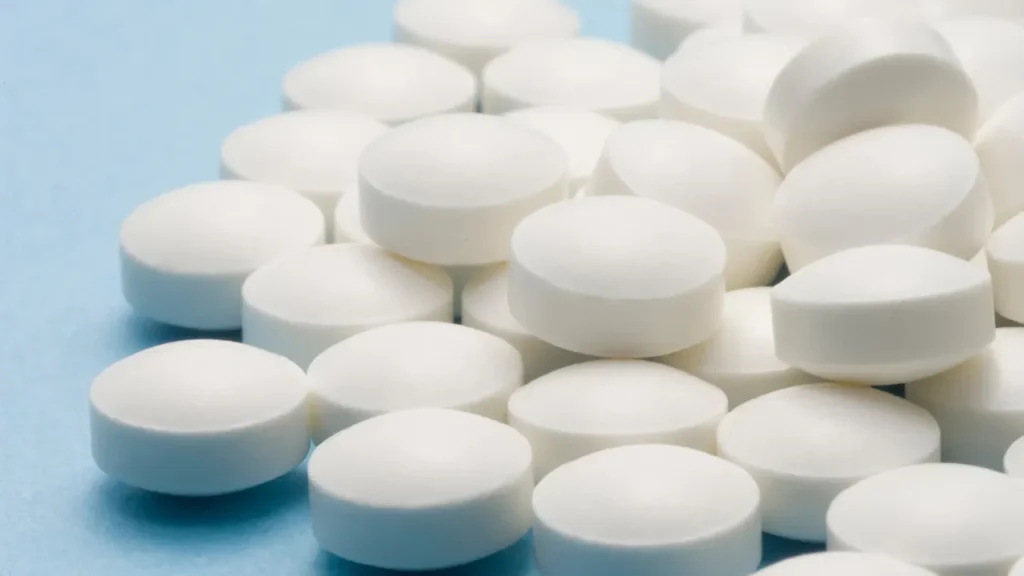The white lily, or lilium candidum, is a perennial herbaceous plant that is indigenous to the Balkans and the Eastern Mediterranean. It is a member of the liliaceae family. The plant has been used for a variety of therapeutic and medical purposes throughout history. With supporters believing it has several health advantages, interest in white lily as a dietary supplement has increased recently. The chemical makeup of white lily, its physiological properties, potential health advantages, ideal dosage, side effects, and potential drug interactions are all covered in this article. The goal of this article is to give readers a thorough grasp of how to use this dietary supplement responsibly and safely.
You May Also Like:
Keep Your Brain Young With the 5 Most Powerful Nootropic Supplements
Finding the Best Supplements for Brain Fog After COVID: 5 Top Brands Reviewed
White Lily: Benefits, Dosage, Side Effects, Drug Interactions, And Other Important Information is an original (NootropicsPlanet) article.
Nature of White Lily
The liliaceae family includes the perennial herbaceous plant known as the white lily (lilium candidum), commonly referred to as the Madonna Lily. It is distinguished by its huge, fragrant, trumpet-shaped white blooms and lance-shaped, dark green leaves. The plant normally blooms from late spring to early summer and can grow to a height of 3-6 feet (1-2 meters).
Native to the Eastern Mediterranean and the Balkans, the white lily has grown there for millennia for ornamental, medicinal, and symbolic purposes. The flower was frequently used in religious rites in ancient Greece and Rome and was thought to represent purity. Traditional medicine has made use of the plant’s different parts, including the flowers, leaves, and bulbs, for their alleged healing benefits.
Health Benefits
Although research on white lily’s health benefits is still in its early stages, preliminary findings point to a number of potential medicinal uses:
1. Wound Healing: White lily has historically been used to treat skin disorders and speed up the healing of wounds. When white lily extract is applied topically, it has been demonstrated in studies to hasten healing and lessen inflammation in animal models.
2. Anti-Cancer Activity: In vitro research has shown that the steroidal saponins from white lily can stop the development of a number of cancer cell lines, including breast, lung, and colon cancer cells. Further research is necessary to completely understand the precise mechanisms underlying these anti-cancer benefits.
3. Neuroprotective Effects: According to some research, the flavonoids in white lily can prevent neurodegenerative illnesses like Parkinson’s and Alzheimer’s by lowering oxidative stress and inflammation in the brain. To confirm these results and clarify the underlying effects, more research is required.
4. Cardiovascular Health: White lily’s anti-inflammatory and antioxidant properties can help manage and prevent cardiovascular illnesses. White lily extract has been proven in animal experiments to lower blood pressure and enhance endothelial health, which can lessen the risk of atherosclerosis and other cardiovascular diseases.
5. Respiratory Health: White lily can help treat respiratory disorders like asthma and chronic obstructive pulmonary disease (COPD) due to its anti-inflammatory and noninflammatory properties. To determine the effectiveness and safety of white lily in treating various disorders, more research is required.

Chemistry of White Lily
The complicated chemical makeup of white lily changes according to the plant component, the growth environment, and the extraction technique used. The main bio-active components of white lily include phenolic chemicals, flavonoids, and steroidal saponins. These substances are assumed to be in charge of the plant’s healing abilities.
1. Steroidal Saponins: Sterodial saponins are glycosides that are composed of a sugar moiety linked to a steroidal aglycone and are found in nature. The white lily’s steroidal saponins have anti-inflammatory, noninflammatory, and anticancer properties.
2. Flavonoids: Flavonoids are a class of polyphenolic substances that have anti-inflammatory, anti-oxidative, and anti-carcinogenic characteristics. The flavonoids kaempferol, quercetin, and isorhamnetin can all be found in white lily.
3. Phenolic Substances: The phenolic acids found in white lily, such as ferulic, p-hydroxybenzoic, and caffeic acids, have anti-inflammatory and antioxidant properties.
Physiological Properties of White Lily
Although the physiological processes by which White Lily exerts its health benefits are not fully known, the body of recent research points to a number of possible pathways:
1. Antioxidant Activity: Flavonoids and phenolic substances found in white lily have antioxidant properties that help to squelch free radicals and lessen oxidative stress. This can prevent cellular deterioration and lower the risk of chronic conditions like cancer and cardiovascular disease, which are linked to oxidative stress.
2. Anti-inflammatory Activity: The steroidal saponins and flavonoids in white lily can influence the generation of pro-inflammatory cytokines and reduce the activation of nuclear factor-kappa B (NF-B), an important transcription factor implicated in the inflammatory response. Asthma and arthritis are two inflammatory disorders that can benefit from this.
3. Noninflammatory Effects: Some of the steroidal saponins included in white lily have been discovered to boost the activity of natural killer (NK) cells and macrophages as well as regulate cytokine synthesis, which in turn stimulates the immune system. As a result, the body’s defenses against infections and cancers may be strengthened.

Optimal Dosage
There is currently no known recommended dosage for using white lily as a nutritional supplement because there hasn’t been much research done on it. The dosage can change according to the desired therapeutic result, the particular formulation, and personal characteristics like your age, weight, and overall state of health. Before beginning any supplements, it is essential to speak with your healthcare professional because they may offer tailored suggestions based on your unique needs and circumstances.
Side Effects and Precautions
When taken properly, white lily is generally regarded as harmless, however some people may experience negative reactions or side effects. GI problems, allergic responses, and skin irritation are all possible side effects, particularly when used topically. White lily supplements should not be taken by those who are pregnant, nursing, or have any pre-existing medical issues, as its safety in these groups has not been well demonstrated.
Potential Substance Interactions
Like any dietary supplement, there is a chance that white lily could interact with certain drugs or substances. The following are some possible interactions to be mindful of:
1. Anticoagulant and Anti-platelet dDugs: White lily’s antioxidant and anti-inflammatory properties can enhance the effects of anticoagulant and anti-platelet drugs, hence raising the risk of bleeding. Before consuming white lily supplements, if you are taking certain medications, you should use caution and talk to your doctor.
2. Immunosuppressant Medications: White lily’s noninflammatory properties can interfere with the effects of immunosuppressant treatments, and perhaps lowering their efficacy. Before using supplements containing white lily, if you are on immunosuppressive therapy, you should speak with your doctor.

Best Responsible Use of White Lily
It is crucial to take into account the following recommendations to ensure the best use of white lily as a nutritional supplement:
1. Speak With a Healthcare Expert: It is essential to get medical advice from a licensed healthcare expert before beginning any supplements. Based on specific needs, medical history, and potential conflicts with other drugs or dietary supplements, they can offer tailored suggestions.
2. Pick an Authoritative Source: Choose a premium white lily supplement from a trustworthy supplier to make sure the item is secure, pure, and has the ingredients listed. To aid in making your choice, look for third-party certifications and reviews.
3. Start Small: Begin with a small dosage and gradually raise it as needed, all while following a healthcare professional’s instructions. This method makes it possible to observe how your body responds to the supplement while reducing the possibility of negative effects.
4. Adhere to the Dose Advice: Follow the manufacturer’s or a healthcare professional’s suggested dosage because exceeding it can have negative effects or interact with other medications.
5. Keep an Eye out for Side Effects: While using white lily supplements, keep an eye out for any side effects or negative responses. Stop using it immediately and seek medical advice if any problems occur.
6. Periodic Re-evaluation: Consult a medical expert on a regular basis to re-evaluate whether you still need to take supplements, taking into account any changes to your health, your use of medications, or any new scientific research.
White Lily:
Conclusion
White Lily has been known to treat a variety of illnesses and has been used in ancient medicines, so it is no surprise that it can continue to help more health issues today. More research is still being done on this herb, so be sure to talk to your doctor before taking it as a supplement. The recommendations we have covered in this article can help you take white lily as a nutritional supplement responsibly, increasing its potential health benefits while lowering its hazards.

References:
- Steroidal saponins in White Lily and their potential health benefits. Retrieved from: https://link.springer.com/article/10.1007/s11101-014-9350-8
- Flavonoids of Lilium candidum and their neuroprotective properties. Retrieved from: https://onlinelibrary.wiley.com/doi/abs/10.1002/ptr.2025
- Cardiovascular effects of White Lily extract in animal models. Retrieved from: https://www.tandfonline.com/doi/full/10.3109/13880209.2010.516754
- Traditional uses and potential therapeutic applications of White Lily. Retrieved from: https://www.researchgate.net/publication/334545845_Lilium_candidum_L_A_Review_on_Ethnomedicinal_Uses_Phytochemical_Constituents_and_Biological_Activities
Important Note: The information contained in this article is for general informational purposes only, and should not be construed as health or medical advice, nor is it intended to diagnose, prevent, treat, or cure any disease or health condition. Before embarking on any diet, fitness regimen, or program of nutritional supplementation, it is advisable to consult your healthcare professional in order to determine its safety and probable efficacy in terms of your individual state of health.
Regarding Nutritional Supplements Or Other Non-Prescription Health Products: If any nutritional supplements or other non-prescription health products are mentioned in the foregoing article, any claims or statements made about them have not been evaluated by the U.S. Food and Drug Administration, and such nutritional supplements or other health products are not intended to diagnose, treat, cure, or prevent any disease.


